





| Eurasian Jay (Garrulus glandarius (Linnaeus, 1758)) |






|
|
Scientific name: Garrulus glandarius (Linnaeus, 1758) Common name: Eurasian Jay French name: Geai des chênes Order: Passeriformes Family: Corvidae Size: Body size : 34 cm; Wingspan : 45 to 55 cm; Weight : 140 to 190 g Habitat: Deciduous forests and sometimes coniferous forests. Parks and gardens. Food: The Eurasian Jay is omnivorous but it mainly feeds on plants. It mostly feeds on acorns (oak seeds) it buries to eat in winter. It may also take young birds and eggs, lizards and small rodents. Nesting: The nest is flimsy platform made of twigs and roots and located at medium height in a tree or in a large shrub. Females lay 3 to 7 eggs between April and June. Migration: Sedentary. Partially migratory. Geographic area: Europe, Asia, North Africa. |
The Eurasian Jay has a pale plumage, brown rosy on the upper side and beige rosy on the underside. The rump is white. The tail and the wing tips are black. The wing covers, brightly visible, are blue and striated with black and white. The feathers located on the top of the head can be raised in a round-shaped crest. Females are similar to males but slightly smaller. The short and thick bill is next to a broad black moustache. The Eurasian jay has various songs. It emits a loud, harsh alarm call and can also reproduce other bird's songs. |
| [To know more about the Eurasian Jay] [Next picture] [Top] |
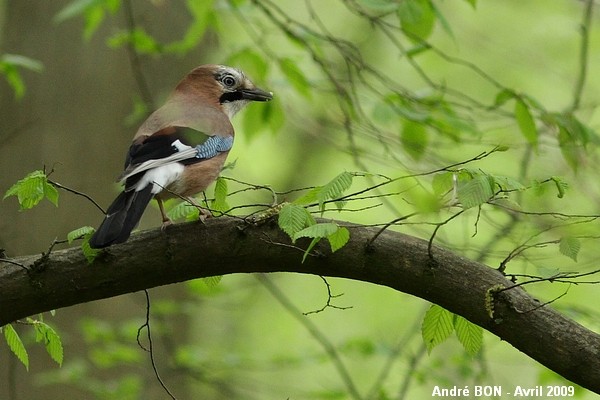
|
I was slowly approaching to try a close up picture - this one is a crop - when a noisy jogger passed and made the Eurasian Jay fly away. I do not have a grudge against him as if the forest belongs to photographers loving Nature, it also belongs to joggers enjoying running in the fresh air. And as I practice both activities, maybe the forest belongs twice to me ;-) |
| [To know more about the Eurasian Jay] [Next picture] [Previous picture] [Top] |
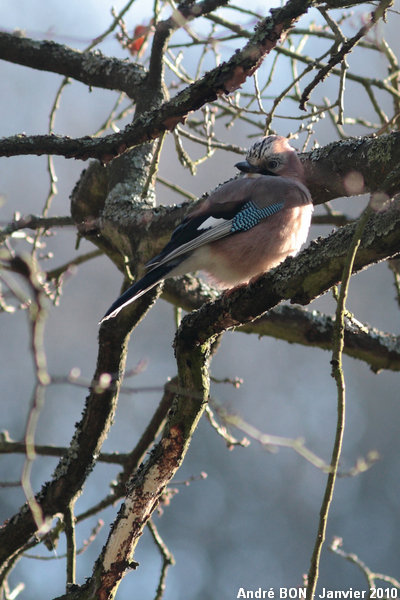
|
It is easier to approach birds during the cold winter days. |
| [To know more about the Eurasian Jay] [Next picture] [Previous picture] [Top] |
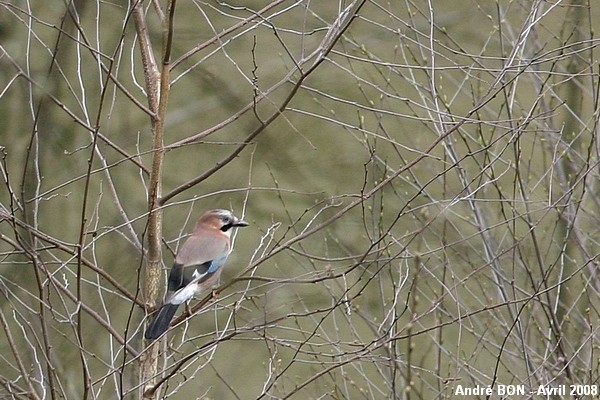
|
Eurasian Jays are noisy birds. You can easily detect them with their alarm call. However they are difficult to approach. I should go to urban parks where they are more used to human presence. |
| [To know more about the Eurasian Jay] [Next picture] [Previous picture] [Top] |
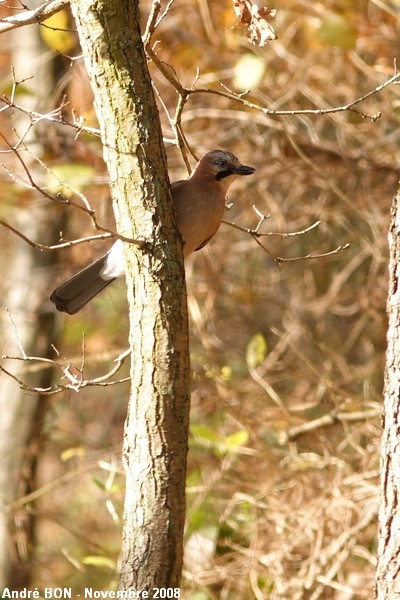
|
Hide and seek game behind the trunks. |
| [To know more about the Eurasian Jay] [Next picture] [Previous picture] [Top] |
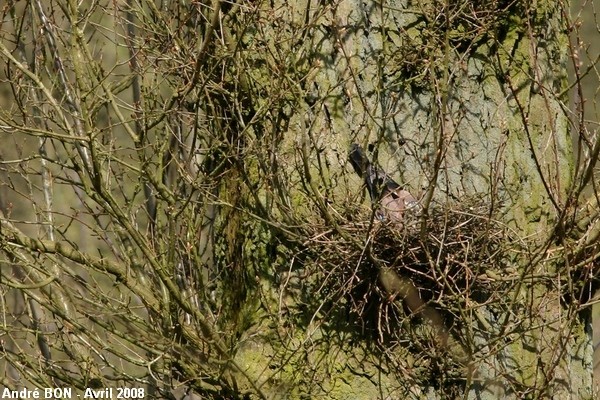
|
Having observed this Eurasian Jay on the nest, I was hoping nice future pictures. I have been disappointed as I have no more observed any Eurasian Jay at this place. Furthermore, the dense growing vegetation would have made photos totally impossible to take. |
| [To know more about the Eurasian Jay] [Previous picture] [Top] |

|
I am observing Eurasian Jays more and more often in my garden and as they are quite noisy I am alerted when they are there. |